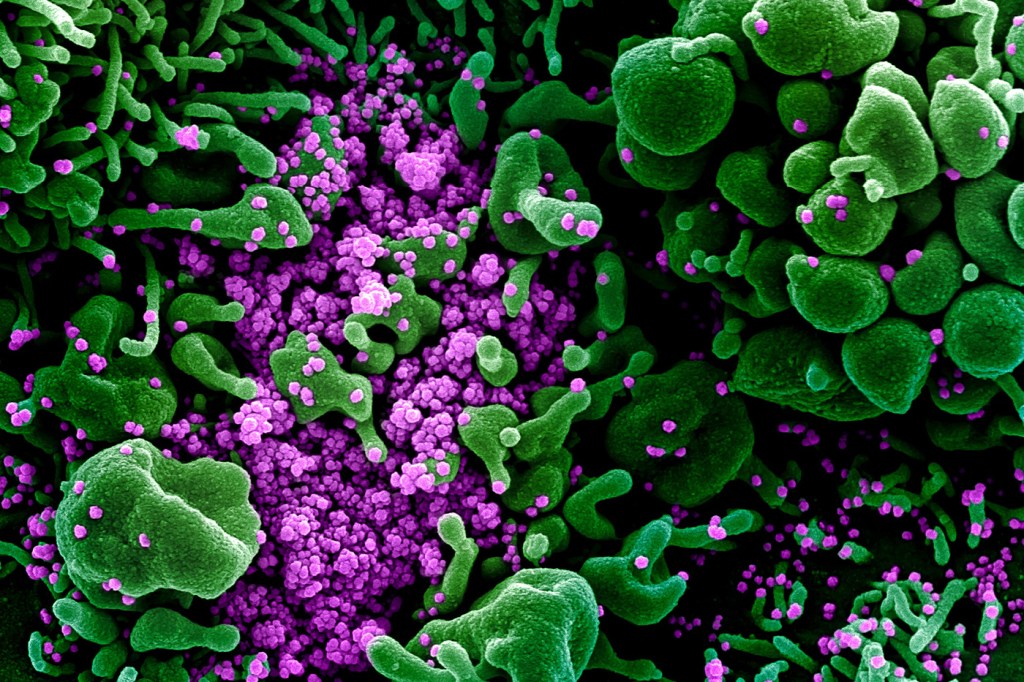What can we expect from the new mutation of the coronavirus?

The new, contagious strain of COVID-19 proves that the U.S. needs to step up surveillance of the constantly-changing virus, says Samuel Scarpino, an assistant professor at Northeastern and director of the Emergent Epidemics Lab.
The SARS-CoV-2 virus acquires a new mutation in its genetic structure about every two weeks, according to the Centers for Disease Control and Prevention. Most mutations have no effect on how deadly or contagious the virus is. But the variant known as B.1.1.7 could be more contagious—though not necessarily more deadly—than previous strains.
“It’s probably in more countries than we know,” Scarpino says of B.1.1.7, which was first identified in the United Kingdom. “That’s why we need the kind of widespread genomic surveillance the U.K. has instead of constantly playing catch-up.”
Genomic testing monitors for mutations in the virus. This crucial information can be used to ensure the vaccine remains effective against new strains. Genomic testing hasn’t been prioritized in the U.S. despite the fact that it’s not particularly expensive or complicated to perform, Scarpino explains. Moving forward, the U.S. plans to ramp up genomic sequencing to 6,500 samples per week.

Samuel Scarpino, assistant professor in Northeastern’s Network Science Institute works at 177 Huntington Avenue. Photo by Matthew Modoono/Northeastern University
The mutations in B.1.1.7 affect the spike proteins on the surface of the virus—the mechanism the virus uses to attach to and infect healthy cells. These changes to the spike proteins make it easier for the virus to invade cells, a possible explanation for the increased transmissibility.
The United Kingdom still appears to be the hot spot for B.1.1.7, but it has also been identified in 33 other countries including the United States. People in New York, California, Colorado, and Florida with no recent travel history have tested positive for the new strain, suggesting the variant is already well established in the U.S.
Scarpino answered questions about how B.1.1.7 came to be, and how it might be spreading.
Where did the new strain come from?
Experts believe the mutations responsible for B.1.1.7 most likely occurred while the virus was circulating in an immunocompromised human host.
“With people who have suppressed immune systems and are chronically infected, there’s less pressure from the immune system on the virus, which allows for a lot of diversity in terms of viral types,” Scarpino explains.
A weaker reaction from the immune system leads to a prolonged infection time, allowing for more mutations to occur in a host and eventually spill over into the larger population.
Will the new mutation make the vaccine less effective?
Probably not, Scarpino says. Despite these mutations, he and other experts believe the current vaccines, which were crafted to prevent earlier strains of the virus, will most likely be effective against this variant as well.
The COVID-19 vaccine creates immunity by flooding the body with mRNA that produces proteins that mimic the virus’s spikes. The immune system learns to attack these decoy spikes, and in the event of exposure to SARS-CoV-2, will be prepared to attack the real spikes on the viral particles and prevent infection.
Early evidence suggests that even though the mutations in B.1.1.7 create some changes to the spike proteins, they most likely aren’t enough to render the vaccine ineffective.
“Fortunately, we’re also starting at really high efficacy,” Scarpino says. Both the Moderna and the Pfizer vaccines in distribution now had an efficacy of about 95 percent in trials.
“Even if the effectiveness drops a little bit [from the high trial efficacy], the vaccine could still be highly successful. Look at the flu vaccine. That’s only 30 to 40 percent effective, and even that works if we get enough people to take it,” he says.
Similarly, this new variant does not change the efficacy of current PCR tests, which can be quickly adapted to detect new variants.
Where is the new strain spreading?
Because of massive holiday travel—the Transportation Security Administration estimates more than a million people per day passed through airport security in the U.S. in the days leading up to and following Christmas—Scarpino predicts a huge uptick in cases in the coming weeks. But will those new infections come from B.1.1.7? The data is inconclusive, he says.
“It’s clear that in some places, B.1.1.7 is the dominant variant,” he says. “But the variant has not been universal in all the places where cases have been observed to have shot up.” In other words, there are too many factors in the equation of transmissibility to determine whether B.1.1.7 alone is responsible for upticks in cases.
The bottom line, Scarpino says, is that it doesn’t necessarily matter whether these catastrophically high case numbers are due to a new strain or not in terms of public health recommendations.
“We still need to do more to protect people,” he says. “The COVID strains we already have are plenty infectious. The point is, we need to put in place substantial restrictions to get this under control.”
For media inquiries, please contact Marirose Sartoretto at m.sartoretto@northeastern.edu or 617-373-5718.





